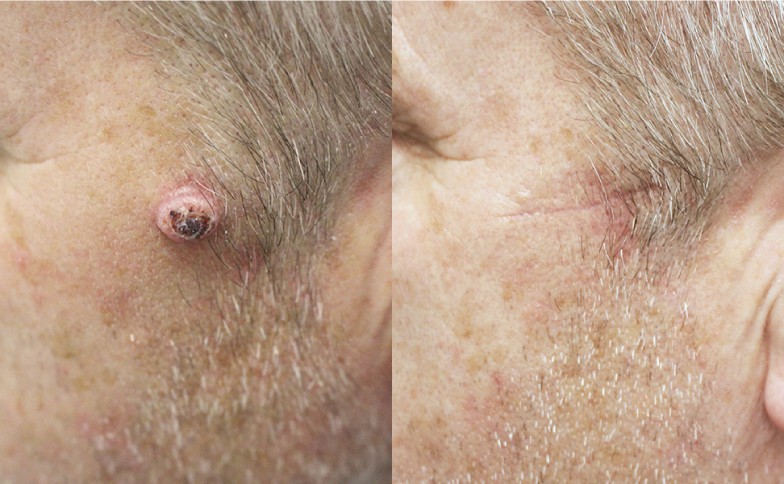skin cancer

Skin cancer — the abnormal growth of skin cells — most often develops on skin exposed to the sun. But this common form of cancer can also occur on areas of your skin not ordinarily exposed to sunlight. There are three major types of skin cancer — basal cell carcinoma, squamous cell carcinoma, and melanoma.
You can reduce your risk of skin cancer by limiting or avoiding exposure to ultraviolet (UV) radiation. Checking your skin for suspicious changes can help detect skin cancer at its earliest stages. Early detection of skin cancer gives you the greatest chance for successful skin cancer treatment.
Symptoms
Where skin cancer develops
Skin cancer develops primarily on areas of sun-exposed skin, including the scalp, face, lips, ears, neck, chest, arms and hands, and on the legs in women. But it can also form on areas that rarely see the light of day — your palms, beneath your fingernails or toenails, and your genital area. Skin cancer affects people of all skin tones, including those with darker complexions. When melanoma occurs in people with dark skin tones, it’s more likely to occur in areas not normally exposed to the sun, such as the palms of the hands and soles of the feet.
Causes
Skin cancer occurs when errors (mutations) occur in the DNA of skin cells. The mutations cause the cells to grow out of control and form a mass of cancer cells.
Cells involved in skin cancer
Skin cancer begins in your skin’s top layer — the epidermis. The epidermis is a thin layer that provides a protective cover of skin cells that your body continually sheds. The epidermis contains three main types of cells:
1) Squamous cells lie just below the outer surface and function as the skin’s inner lining.
2) Basal cells, which produce new skin cells, sit beneath the squamous cells.
3) Melanocytes — which produce melanin, the pigment that gives skin its normal color — are located in the lower part of your epidermis. Melanocytes produce more melanin when you’re in the sun to help protect the deeper layers of your skin.
If your Specialist Plastic Surgeon suspects that you may have a skin cancer, a biopsy may be needed for diagnosis. This is a quick and simple procedure usually done under local anaesthesia. For a known BCC or SCC, the lesion is usually cut out and sent to a pathology lab for examination under a microscope.
Most skin cancers are removed surgically, by a Specialist Plastic Surgeon. If the cancer is small, the procedure can be done quickly and easily. The procedure may be a simple excision, which usually leaves a thin, barely visible scar. If examination shows that all the cancer cells have probably been removed, you may not need further treatment.
For a suspected melanoma, the surgeon may remove all or part of the lesion. It is then sent to a laboratory so a pathologist can examine it under a microscope. Depending on the pathologist’s report, a wider excision (that is, taking more skin more deeply) may be recommended. In which case, a skin graft or a skin flap may be required to repair a large area of skin.
- Cryotherapy (freezing the cancer cells)
- Radiation therapy (using x-rays)
- Topical chemotherapy (anti-cancer drugs applied to the skin)
- Laser for small and superficial skin cancers
- An injection of interferon (a protein that can boost the body’s immune response to treat certain BCCs
- Medications to treat some types of superficial BCCs
